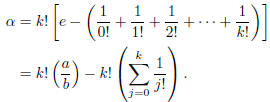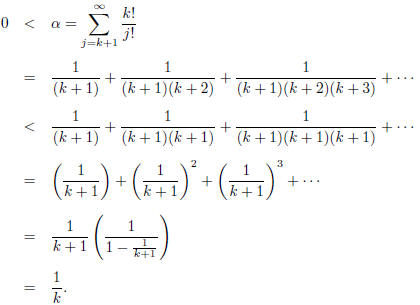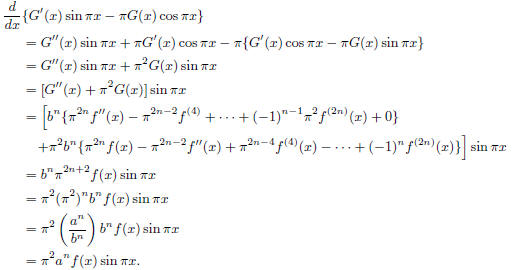- Home
- INTERMEDIATE ALGEBRA
- Course Syllabus for Algebra I
- Mid-Plains Community College
- FRACTION OF A WHOLE NUMBER
- Systems of Linear Equations
- MATH FIELD DAY
- Course Outline for Finite Mathematics
- Calculus
- Algebra Final Examination
- Math 310 Exam #2
- Review of Trigonometric Functions
- Math 118 Practice test
- Precalculus Review
- Section 12
- Literal Equations
- Calculus Term Definitions
- Math 327A Exercise 2
- Public Key Algorithms II
- Maximizing Triangle Area
- Precalculus I Review for Midterm
- REVIEW OF A FIRST COURSE IN LINEAR ALGEBRA
- Math 6310 Homework 5
- Some Proofs of the Existence of Irrational Numbers
- ALGEBRAIC PROPERTIES OF MATRIX OPERATIONS
- Math 142 - Chapter 2 Lecture Notes
- Math 112 syllabus
- Math 371 Problem Set
- Complex Numbers,Complex Functions and Contour Integrals
- APPLICATIONS OF LINEAR EQUATIONS
- Week 4 Math
- Fractions
- Investigating Liner Equations Using Graphing Calculator
- MATH 23 FINAL EXAM REVIEW
- Algebra 1
- PYTHAGOREAN THEOREM AND DISTANCE FORMULA
- Georgia Performance Standards Framework for Mathematics - Grade 6
- Intermediate Algebra
- Introduction to Fractions
- FACTORINGS OF QUADRATIC FUNCTIONS
- Elementary Algebra Syllabus
- Description of Mathematics
- Integration Review Solutions
- College Algebra - Applications
- A Tip Sheet on GREATEST COMMON FACTOR
- Syllabus for Elementary Algebra
- College Algebra II and Analytic Geometry
- Functions
- BASIC MATHEMATICS
- Quadratic Equations
- Language Arts, Math, Science, Social Studies, Char
- Fractions and Decimals
- ON SOLUTIONS OF LINEAR EQUATIONS
- Math 35 Practice Final
- Solving Equations
- Introduction to Symbolic Computation
- Course Syllabus for Math 935
- Fractions
- Fabulous Fractions
- Archimedean Property and Distribution of Q in R
- Algebra for Calculus
- Math112 Practice Test #2
- College Algebra and Trigonometry
- ALGEBRA 1A TASKS
- Description of Mathematics
- Simplifying Expressions
- Imaginary and Complex Numbers
- Building and Teaching a Math Enhancement
- Math Problems
- Algebra of Matrices Systems of Linear Equations
- Survey of Algebra
- Approximation of irrational numbers
- More about Quadratic Functions
- Long Division
- Algebraic Properties of Matrix Operation
- MATH 101 Intermediate Algebra
- Rational Number Project
- Departmental Syllabus for Finite Mathematics
- WRITTEN HOMEWORK ASSIGNMENT
- Description of Mathematics
- Rationalize Denominators
- Math Proficiency Placement Exam
- linear Equations
- Description of Mathematics & Statistics
- Systems of Linear Equations
- Algebraic Thinking
- Study Sheets - Decimals
- An Overview of Babylonian Mathematics
- Mathematics 115 - College Algebra
- Complex Numbers,Complex Functions and Contour Integrals
- Growing Circles
- Algebra II Course Curriculum
- The Natural Logarithmic Function: Integration
- Rational Expressions
- QUANTITATIVE METHODS
- Basic Facts about Rational Funct
- Statistics
- MAT 1033 FINAL WORKSHOP REVIEW
- Measurements Significant figures
- Pre-Calculus 1
- Compositions and Inverses of Functions
Some Proofs of the Existence of Irrational Numbers
 |
Neal Coleman is a freshman majoring in
pure math- ematics at Ball State. He served as the secretary of the Ball State Math Club during the 2006-07 school year; during the fall semester, he participated in the Student-Faculty Colloquium, where, advised by Dr. Rich Stankewitz, he prepared a presentation on proofs of the existence of irrational numbers. |
Over the course of this article, we will discuss
irrational numbers and several
different ways to prove their existence. As is commonly known, the real num-
bers can be partitioned into rational numbers and irrational numbers. Rational
numbers are those which can be represented as a ratio of two integers — i.e.,
the set { : a, b ∈ Z, b ≠ 0} — and the
irrational numbers are those which
: a, b ∈ Z, b ≠ 0} — and the
irrational numbers are those which
cannot be written as the quotient of two integers. We will, in essence, show
that the set of irrational numbers is not empty. In particular, we will show
 ,
,
e, π, and π2 are all irrational.
Geometric Proof of the Irrationality of

The ancient Greeks were some of the first mathematicians. However, instead
of approaching mathematical problems numerically or abstractly, the Greeks
were very concrete: they envisioned problems geometrically. They considered
numbers to be analogous to line segments. Two segments are considered
commensurate
if and only if there exists some other segment called a "common
measure" which can be overlaid an integer number of times onto both. That is
pretty convoluted; it is easier to think of two segments as commensurate when
you can find some other "unit" segment to measure them both, where each has
integer length with respect to the segment of this "unit.

We begin by discussing why the diagonal and side of a
square are incom-
mensurate, i.e., why it is impossible to find some segment, however small, that
can measure both the diagonal and square.
We start our proof from [2, p. 23], by constructing a square ABCD. Because
we are assuming the side and diagonal are commensurate for contradiction, we
shall denote the segment of common measure between the side AD and the
diagonal AC by e. To begin the proof, on the diagonal AC, starting from C,
measure out a segment congruent to AD  CD,
and call the point where the
CD,
and call the point where the
subsegment terminates F. Next construct a line perpendicular to AC from F
out to AD. Call the point where it meets the side B'. Note that because angle
B'AF is 45° and AFB' is 90°, AF  B'F. Moreover, ΔCFB'
B'F. Moreover, ΔCFB'  ΔCDB'
ΔCDB'
because both are right triangles, CD  CF, and they share the hypotenuse
CF, and they share the hypotenuse
CB'. We may therefore conclude that B'D  B'F
B'F  AF. Now, create a new
AF. Now, create a new
square with B'F and FA as sides. Note that the new diagonal is going to be
B'A. Since AC and FC  CD
CD  AD are commensurate by e, then so are AF
AD are commensurate by e, then so are AF
and B'A, one side of the new square and its diagonal.
Clearly, we can repeat this process of constructing a new square indefinitely,
with each new square strictly smaller than the last. Note also that,
inductively,
the sides and diagonal of each new square are measured by our original e. This
is a contradiction by infinite descent: for example, suppose that |AC| = 1000e;
since each successive diagonal is measurable by e, and we can construct a
new diagonal indefinitely, the 1001st diagonal we construct will no longer be
commensurate by e.
We conclude that the side and diagonal of a square are incommensurable.
This is equivalent to stating that
![]() is irrational: two line segments are com-
is irrational: two line segments are com-
mensurable if and only if there exists another segment such that each of the
two initial segments is an integer multiple of that third one, i.e., that the
ratio
of their lengths can be represented as a rational number. Hence, since the
diagonal and side of a square are incommensurable, their ratio,
![]() , cannot be
, cannot be
represented as a ratio of two integers, and is therefore irrational.
Incidentally,
it is to be noted that the discovery of irrational numbers shocked and startled
the Greeks: according to legend, the Pythagorean who first completed this
proof atoned by perishing in a shipwreck [2].
Algebraic Proof of the Irrationality of
![]()
We can take the essence of the geometric proof presented above and distill it
into an algebraic argument as follows.
To prove the irrationality of
![]() by contradiction, we suppose it is rational.
by contradiction, we suppose it is rational.
Then consider the set  . Invoking the
. Invoking the
Well-Ordering Principle, set  = min{m : (m, n) ∈ S}, the smallest of the set
= min{m : (m, n) ∈ S}, the smallest of the set
of numerators. Then let  ∈
∈
![]() be the matching denominator for
be the matching denominator for
![]() such
such
that , and thus
, and thus
 . Now, we have, by subtracting
. Now, we have, by subtracting
 from
from
both sides,  ; that is,
; that is,

And so

Since
![]() > 1, we know
> 1, we know
 ; however, this implies that
; however, this implies that
 , which
, which
indicates that  . This is a contradiction to the minimality of
. This is a contradiction to the minimality of
![]() ,
,
establishing that ![]() is irrational.
is irrational.
The basic idea behind these first two proofs is to find some violation of the
Well-Ordering Principle: to show that if ![]() were rational, it would be possible
were rational, it would be possible
to construct a set of positive integers with no smallest element (in the first
proof, this set with no lower bound is the set of diagonals: they are integer
multiples of finite e, and yet can decrease indefinitely; in the second proof,
and
a bit more explicitly, the set with no lower bound is the set of all numerators
of rational realizations of ![]() ).
).
It should be noted that the commonplace proof of the irrationality of ![]()
invokes the Prime Factorization theorem in order to have the phrase "reduced-
form fraction" be well-defined; the two proofs presented above, however, do
not require this secondary result, and so are somewhat stronger than the most
common proof.
Irrationality of e
The number ![]() is not, of course, the only irrational number; it is possible
is not, of course, the only irrational number; it is possible
to show that some important numbers which naturally occur in geometry and
analysis are also irrational. For example, as seen in [1], let us consider the
natural exponential e. Given the MacLaurin expansion of ex, we see that

Suppose for contradiction that e =
![]() is rational, with a, b ∈
is rational, with a, b ∈
 . Now, fix any
. Now, fix any
k > 1 such that b|k!, for example, k = b.
Define

Thus, because both terms in the final expression are
integers, α ∈ Z. But
consider now that

Since k > 1, we now have a startling and unsettling
occurrence: the integer α
satisfies 0 < α < 1. This is our contradiction: e is therefore irrational.
Irrationality of π and π2
Nearly as ubiquitous as e, but arising initially from geometric instead of
analytic
considerations, is the number π, the ratio of any circle's circumference to its
diameter. This last proof (from [1, pp. 46–47], with some detail added), of
the irrationality of π, is rather more mysterious than the previously discussed
proofs. Several very conveniently chosen functions conspire to show that it is
impossible to write π or π2 as quotients of integers.
We begin by defining, for any positive integer n,

where the  ∈ Z. Note that for 0 < x < 1, we have 0 < f(x)
<
∈ Z. Note that for 0 < x < 1, we have 0 < f(x)
<  and that
and that
f(0) = 0 and  if m < n or m > 2n. However, if n ≤ m ≤ 2n,
if m < n or m > 2n. However, if n ≤ m ≤ 2n,
 ∈ Z.
∈ Z.
Hence, f(x) and all its derivatives take integral values at x = 0. Since
f(1-x) = f(x), the same is true at x = 1, because .
.
Now, suppose that π2 =
![]() is rational, where a and b are positive integers.
is rational, where a and b are positive integers.
Consider the function

Note that both G(0) and G(1) are integers. With a little algebra, we have

Then

Therefore,

which is an integer. But, because 0 < f(x) <
![]() , for any x such that 0 < x < 1,
, for any x such that 0 < x < 1,

which is strictly less than 1 for large n.
This is our contradiction. Consequently, π2 is irrational, and so is π.
References
[1] G.H. Hardy, and E.M. Wright, An Introduction to the Theory of Numbers,
Oxford University Press (1979).
[2] H. Rademacher, and O. Toeplitz, The Enjoyment of Mathematics, Dover
(1990).


